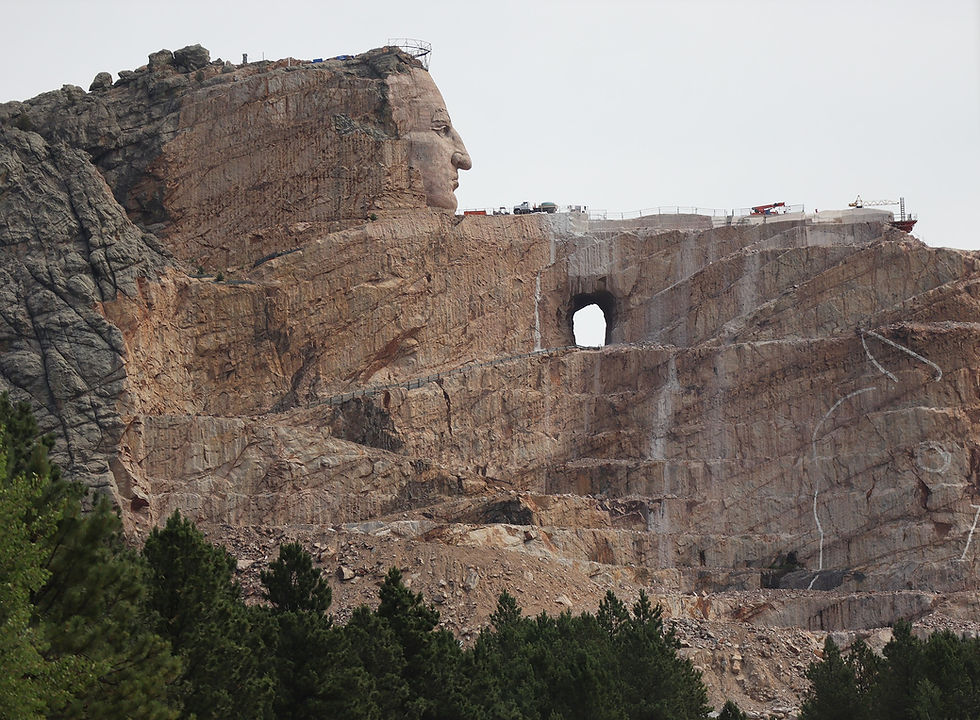Public Monuments Part I: How do we commemorate histories of slavery?
- Stuart Harden

- Apr 22, 2021
- 3 min read
Updated: Oct 24, 2021

“Slave Market Memorial” 1998.
In 1873 the world’s last open slave market in Stone Town, Zanzibar closed for good.
CURRICULAR CONNECTIONS:
Social Studies 10-1 Related Issue #2: "To what extent should contemporary society respond to the legacies of historical globalization?"
In this series of lessons, students are introduced to the history of the transatlantic slave trade within the context of a broader study of several key features of historical globalization: mercantilism, imperialism, and colonialism.
During 6-8 hours of class time and through a series of learning activities, students will:
Understand the logistics and mercantile economics of the transatlantic slave trade,
Be exposed to the experiences and testimonies of enslaved people,
Understand how slavery benefited European imperial powers,
Consider what factors make a successful public monument,
Be able to critique the efficacy and value of various public monuments,
Use primary sources to design a monument which communicates a key feature or experience of slavery.
The culminating task in these lessons will see students plan and design their own monument to enslaved people. I chose the topic of monuments and commemoration because it is a living and contested issue. Slavery is one feature of historical globalization, and communities around the world are currently wrestling with how best to respond to public memorials that do not accurately or respectfully communicate historical narratives of slavery. One can imagine adapting this lesson to colonialism in Canada quite seamlessly.
In this post I will describe the first of two lesson plans and provide all materials needed to begin teaching about public monuments and histories of slavery.
Credit for some of the materials in this plan goes to Lauren Winters from St Robert of Newminster Catholic School in Washington, Tyne & Wear, United Kingdom. You can find her original lesson plan here: http://www.nationalarchives.gov.uk/education/teachers/professional-development/project-resources/transatlantic-teachers-resources-2011/remembering-victims-slave-trade/

When I first taught this lesson, students had already been studying and discussing the history of the Silk Road and the beginning of the Age of Imperialism--all with an eye to what changed and what stayed the same between these two epochs. You will see in the lesson plan below several mentions of these previous lessons on the Silk Road and the dawn of imperialism. As with all of the teaching materials on this page, be sure to tailor the content to your class and their needs if you intend to use them.
Use the following slides to introduce students to a brief history of the transatlantic slave trade:
Once students have been introduced to the slave trade, use the following slides to begin a discussion on monuments and commemorations. Included are some examples of well known monuments. Discuss with students what makes each monument successful or unsuccessful.
The first task of the lesson is introduced in the previous slides. To help students begin dissembling the function of monuments, in groups of 3-4 students create "monument success criteria." Students come up with 4 measures of success for any monument and record them in the document below:
That task finished, students now apply those criteria to several monuments dedicated to enslaved people. The following images can be uploaded to an online collaborative platform such as Google Slides, where students can review each monument according to the criteria they just created. Note that I have recommended students rate each monument out of 10; some students may find such a rating system insensitive. It is crucial that you do not force a student to rate any monument, though it should be emphasized that students are critiquing the methods and message of the monuments, not the histories of enslaved people.
Once students have completed their reviews, discuss their responses as a class. I have paid special attention with my classes to the "Emancipation Memorial" featuring Abraham Lincoln; it helps illustrate how monuments with progressive aspirations can fail the people they purport to honour.
Finally, now that students have had the chance to apply their monument success criteria to real-life examples, give them a chance to revise their benchmarks. Encourage students to note what criteria their classmates used, and to incorporate them into their own lists if they so choose.
By the end of this first lesson, students will:
Have an understanding of the logistics and mercantile economics of the transatlantic slave trade,
Understand how slavery benefited European imperial powers,
Have encountered the experiences and testimonies of enslaved people,
Have produced concrete criteria for what makes a successful monument,
Be able to critique an array of monuments based on those criteria.
Beginning next lesson, students will shift from critiquing existing monuments to imagining their own memorials to enslaved people. Keep watching this space for subsequent lesson plans!













Comments